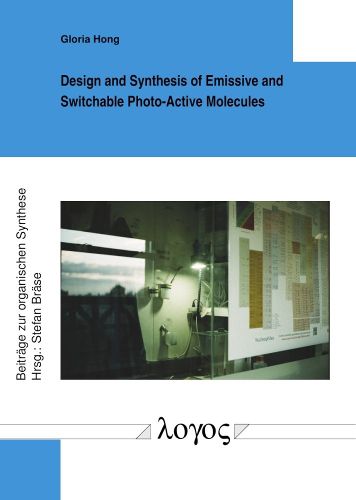Readings Newsletter
Become a Readings Member to make your shopping experience even easier.
Sign in or sign up for free!
You’re not far away from qualifying for FREE standard shipping within Australia
You’ve qualified for FREE standard shipping within Australia
The cart is loading…






Photoactive organic molecules such as luminophores and photoswitches react upon irradiation with light by emitting light of a specific wavelength or a conformational change, respectively.
Organic thermally activated delayed fluorescence (TADF) materials are highly efficient luminophores that readily find application in organic light-emitting diodes (OLEDs) or as dyes in cellular imaging. Three aromatic, heterocyclic electron-accepting systems for novel red luminophores with TADF properties were investigated based on dibenzo[a,c]phenazine, pyrrolo[3,4-f]isoindole-1,3,5,6(2H,6H)-tetraone and 1Ha??pyrrolo[3,4a??b]quinoxaline-1,3(2H)-dione.
Light can also be used to trigger conformational changes and azobenzenes are one of the most prominent examples. An optical control over ion channels can be achieved by attaching azobenzenes to ligands. The investigation of the synthesis of azobenzenes with modified substitution patterns was conducted, among them a push-pull system designed to bring an electron-donating and electron-accepting moiety into spatial proximity upon photoswitching.
$9.00 standard shipping within Australia
FREE standard shipping within Australia for orders over $100.00
Express & International shipping calculated at checkout
Photoactive organic molecules such as luminophores and photoswitches react upon irradiation with light by emitting light of a specific wavelength or a conformational change, respectively.
Organic thermally activated delayed fluorescence (TADF) materials are highly efficient luminophores that readily find application in organic light-emitting diodes (OLEDs) or as dyes in cellular imaging. Three aromatic, heterocyclic electron-accepting systems for novel red luminophores with TADF properties were investigated based on dibenzo[a,c]phenazine, pyrrolo[3,4-f]isoindole-1,3,5,6(2H,6H)-tetraone and 1Ha??pyrrolo[3,4a??b]quinoxaline-1,3(2H)-dione.
Light can also be used to trigger conformational changes and azobenzenes are one of the most prominent examples. An optical control over ion channels can be achieved by attaching azobenzenes to ligands. The investigation of the synthesis of azobenzenes with modified substitution patterns was conducted, among them a push-pull system designed to bring an electron-donating and electron-accepting moiety into spatial proximity upon photoswitching.